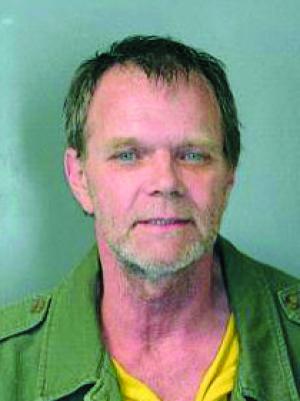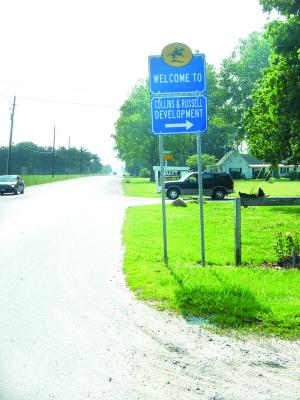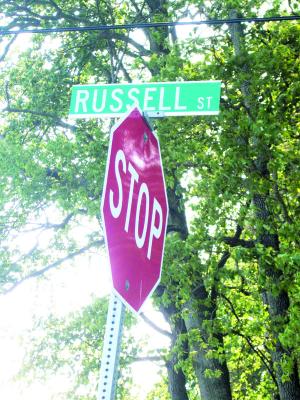Prosecution: Ashing died of gunshot wounds
Detectives testified blood was all over Michael Hudson’s living room, haphazardly hidden but quickly discovered, when police searched the house after uncovering the body of Spencer Ashing in the backyard.
Prosecutors continued presenting their case May 24, the second day of Hudson's trial. Hudson, 59, is charged with murdering Ashing, his son, in February 2010. Police found Ashing’s decomposing body behind Hudson’s home, covered by a tarp and a pile of brush, March 26, 2010. Ashing was 19 years old.
Home of a hoarder
Detective Roger Cresto of Delaware State Police collected evidence at Hudson’s home on Russell Street in Milton. Cresto said the home was a singlewide trailer that smelled like trash and looked like it had not been cleaned in months or years.
“The home was dirty, disarray, very cluttered, as though a hoarder lived there,” he said.
Cresto said a beige carpet on the living room floor stood out from the mess. “It was the cleanest thing in the house,” he said.
Cresto testified the beige carpet was covered by a clear plastic drop cloth. He said he realized the carpet was not secured to the floors, and when he pulled the beige carpet up, he noticed dark red stains on the older carpet beneath it.
Prosecutor Melanie Withers gave Cresto the old carpet, which had been seized by police as evidence. Poofs of dust kicked up as Cresto unrolled the 14-by-4-foot piece of dull, grayish carpet. In the jury box, jurors stood on their tiptoes to catch a glimpse of the macabre relic.
During his investigation, Cresto said, he tested the stains to confirm the dark red substance on the old carpet was blood. He testified he found blood throughout the living room on the floor and the sofa. In police photographs, a royal blue sheet covered a sofa cushion where Cresto said he discovered blood.
More pictures from the crime scene showed blood had been splattered on the living room wall and items in the house, each crudely covered by clear plastic or a piece of cloth. A piece of exercise equipment, which crime scene photos showed was speckled with dried blood, had been shoved under the living room sofa when police arrived, Cresto said.
Cresto said when Ashing’s body was found, a gray shirt was found beside it. Withers provided Cresto with the dark gray Aeropostale crewneck shirt. Cresto noted visible holes in the shirt, which he testified were largely consistent with bullet wounds found on Ashing’s body.
Police say Ashing was shot four times and suffered blunt force trauma to the head; only two bullets were recovered from Ashing’s body. Cresto said he and other police searched Hudson’s home and property extensively, including searching inside the walls and in the flooring, but could not locate the other two bullets. “We pretty much turned the whole trailer upside down,” he said.
Carl Rone, a forensic firearms examiner, testified he processed all firearm evidence for the case. Rone said the two bullets recovered from Ashing’s body were fired from the .357-caliber revolver found in Hudson’s possession when he was arrested.
James Bethard, of Delaware Department of Natural Resources and Environmental Control, said he was given samples of a white powdery substance found in various places throughout Hudson’s yard and on Ashing’s body when he was discovered. Bethard testified the substance was calcium carbonate, commonly known as lime.
Medical examiner testifies
Jennie Vershvovsky of the Office of the Medical Examiner testified May 25, that Ashing's death was a homicide. Vershvovsky said the cause of death was multiple gunshot wounds.
Jennifer Weaver, Ashing’s aunt, said she spoke with Hudson Feb. 11, 2010. Weaver testified Hudson told her he last saw Ashing Feb. 3, 2010, getting on the bus for school. Hudson told Weaver his son was probably staying with friends and that Ashing had disappeared before and always returned. When Weaver asked if Hudson had called Ashing’s friends to look for him, Weaver said he replied, “Oh, yeah.”
Weaver testified she told her sister - Ashing’s mother, Margaret Ashing - that her son was missing; Ashing’s mother then called police to report her son missing. Weaver said Hudson called her, angry that she had told Ashing’s mother their son was missing.
Connie Smith, special education coordinator at Cape Henlopen High School, where Ashing had been a student, testified his last day at school had been Jan. 28, 2010.
Jenny Sutton, Ashing’s cousin and friend, testified she spoke with Ashing regularly through the social network Facebook. Sutton said Ashing’s last post was dated 8:10 p.m., Feb. 3, 2010.
Hudson faces charges of first-degree murder, possession of a firearm during the commission of a felony and abusing a corpse. If he is found guilty, Hudson could face 18 years to life in prison.
According to Jason Miller, public information officer for Delaware Department of Justice, prosecutors are seeking a conviction for first-degree murder with a punishment of life imprisonment. Miller said in an email Hudson does not face the death penalty because none of the aggravating circumstances required by law to issue a death sentence are present.
The trial is scheduled to continue at 9:30 a.m., Tuesday, May 31, in Sussex County Superior Court in Georgetown.



















































